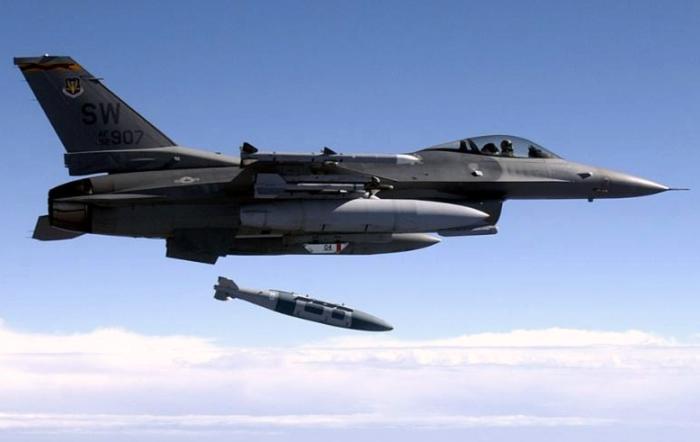
The National Nuclear Security Administration said Thursday it put together the first war-ready B61-12 nuclear gravity bomb on Nov. 23, paving the way to create an estimated 480 of the weapons, which will homogenize four existing variants of the bomb.
The agency “anticipates starting full-scale production in May 2022 and completing all needed production in FY 2026,” according to Thursday’s press release about the milestone. The non-profit, Washington-based Federation of American Scientists estimates that the National Nuclear Security Administration (NNSA) will make about 480 B61-12s.
The upgraded version of the relatively low-yield weapons — estimates by the Federation of American Scientists put the yield at 50 kilotons or so, with an option for lower yields — and will have some Earth-penetrating and standoff capability, the latter thanks to a guided tail kit provided by Boeing that gives the weapon some ability to maneuver, rather than simply freefall.
Including the Boeing tail kit, B61-12 will cost about $12 billion, according to Pentagon and NNSA budget documents. The refurb should give the weapon another 20 years of life in the field, the NNSA said.
The B61-12 first production unit arrived more than a year late. The NNSA thought the proof-of-concept article would be ready in 2020, but the date slipped to late 2021 because the agency discovered capacitors intended for use in the bomb — and in the Navy’s W88 Alt-370 submarine-launched ballistic missile warhead — couldn’t meet military specifications.
The NNSA ended up making customer capacitors to replace the off-the-shelf variants deemed unsuitable for military use. The B61-12 alone has six components that required the replacement capacitors, the NNSA has said.
The Air Force is responsible for integrating the NNSA-made B61-12 with carrier aircraft including versions of the U.S. B-2 bomber, the planned B-21, the F-15, F-16, F-35, and the German-made PA-200, according to the Air Force Nuclear Weapons Center. Although not acknowledged by the U.S. or NATO, B61 is deployed in Europe in the territory of NATO allies.